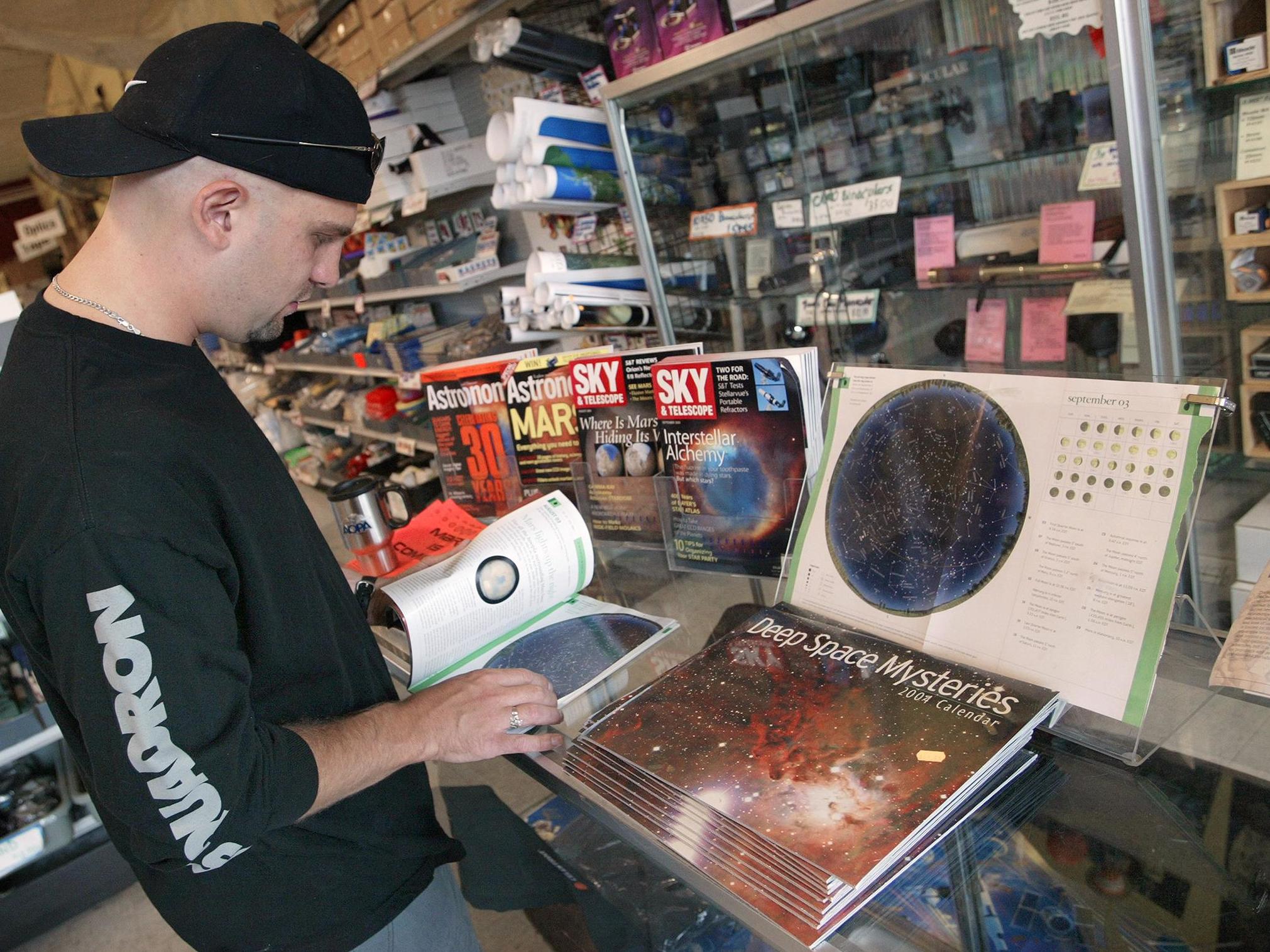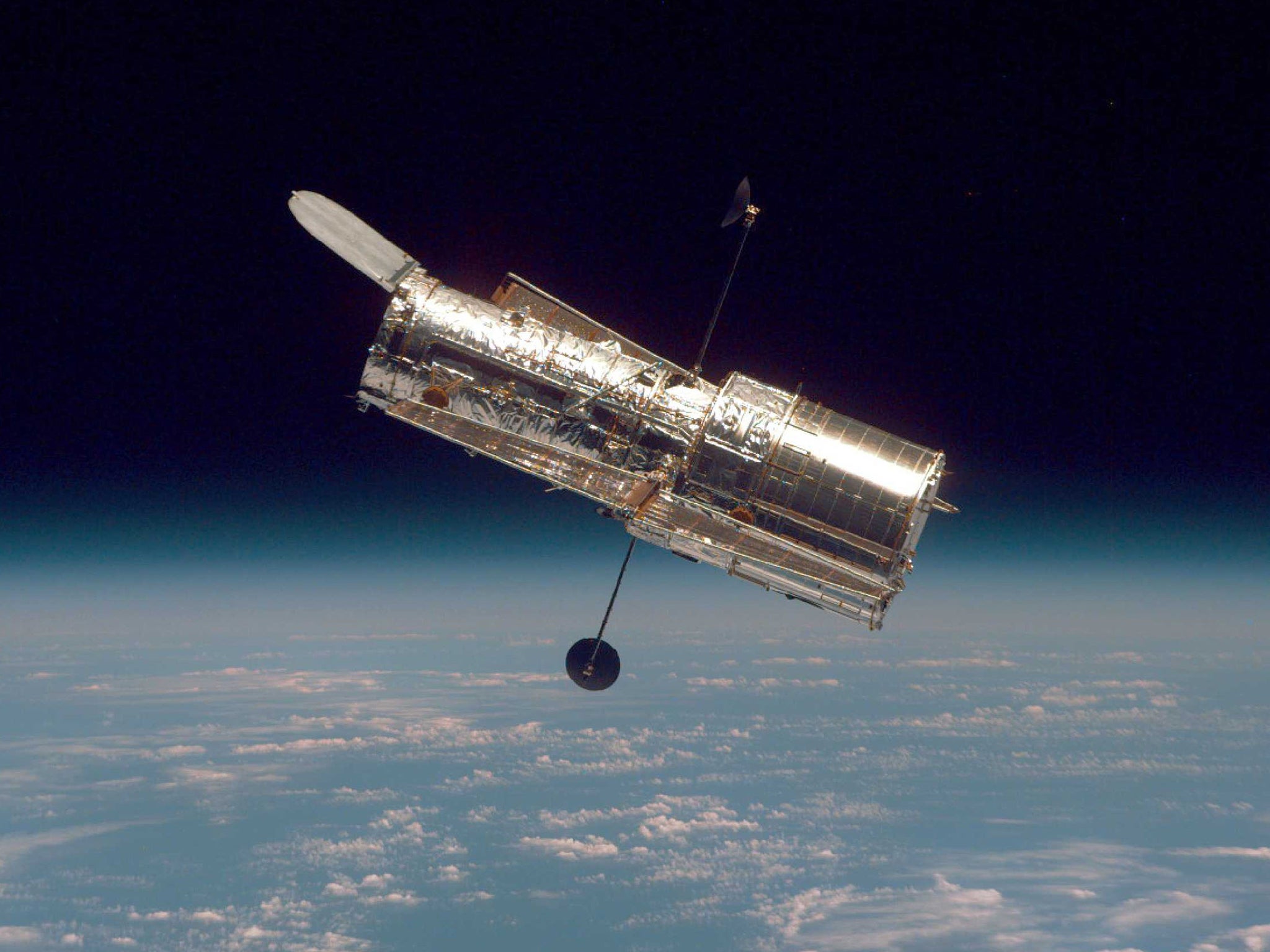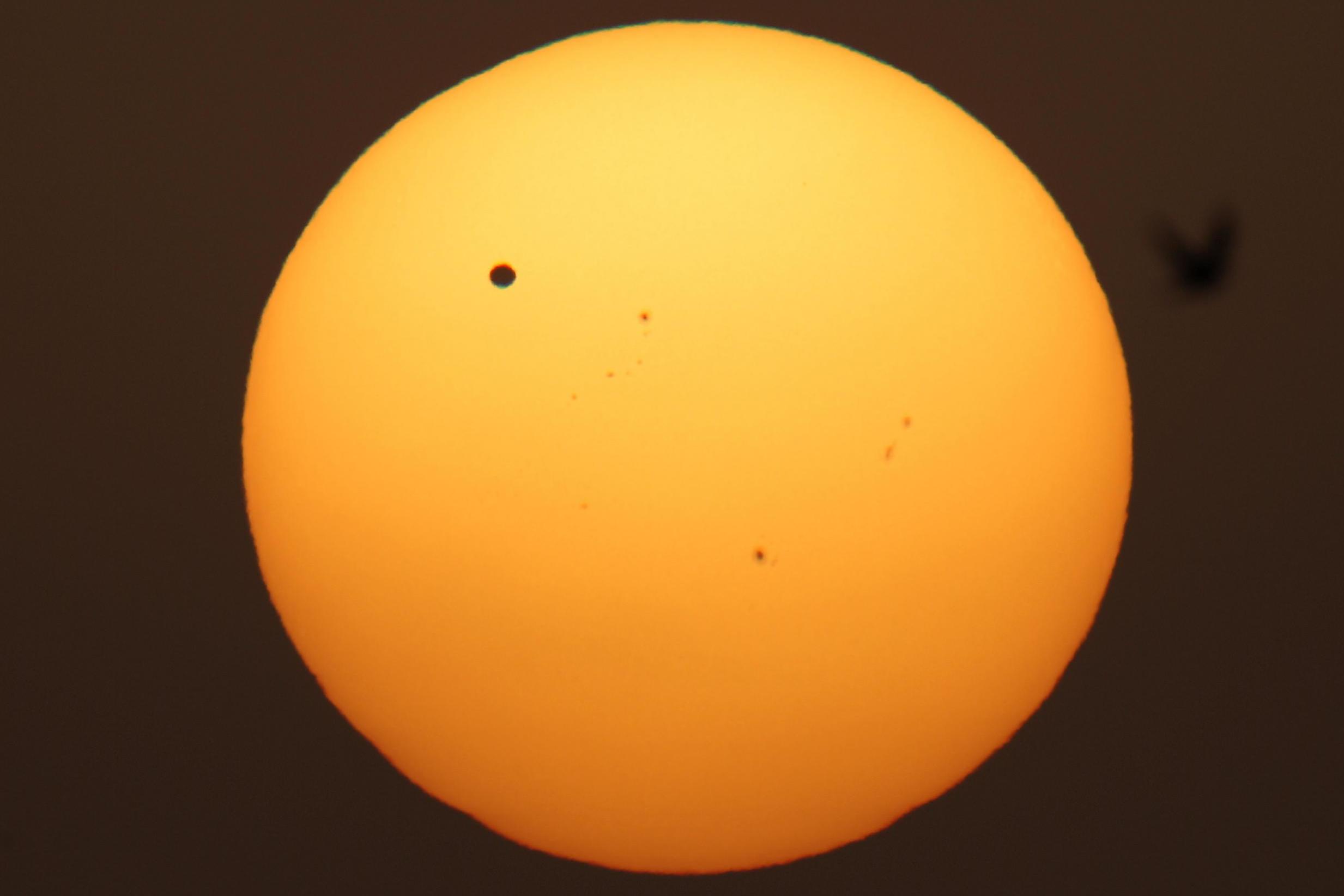Sky & Telescope magazine reaches for the stars in a tough media landscape
Dennis Overbye was known as the $6-an-hour man when he landed his first journalism job at the publication. Here, he charts its astronomical rise and asks whether it can survive the digital apocalypse

Your support helps us to tell the story
From reproductive rights to climate change to Big Tech, The Independent is on the ground when the story is developing. Whether it's investigating the financials of Elon Musk's pro-Trump PAC or producing our latest documentary, 'The A Word', which shines a light on the American women fighting for reproductive rights, we know how important it is to parse out the facts from the messaging.
At such a critical moment in US history, we need reporters on the ground. Your donation allows us to keep sending journalists to speak to both sides of the story.
The Independent is trusted by Americans across the entire political spectrum. And unlike many other quality news outlets, we choose not to lock Americans out of our reporting and analysis with paywalls. We believe quality journalism should be available to everyone, paid for by those who can afford it.
Your support makes all the difference.In the spring of 1976, nearly broke, struggling with a novel and having exhausted the patience of everyone around me, I wrote a letter begging for some kind of job to every publisher listed in the Boston Yellow Pages. I had a physics degree from Massachusetts Institute of Technology, but I didn’t want to be a physicist anymore; I had decided I was a writer.
I wound up landing a part-time job at a small monthly magazine called Sky & Telescope, a venerable bible of astronomers and amateur telescope makers, as an assistant typesetter, for $6 an hour. On my first day, as I was entering, the magazine’s founder, Charles Federer Jr, met me on the pavement and warned me not to tell my new colleagues how much I was making. The company would never give me such an exorbitant salary on a full-time basis, he said.
This was true; when I was hired full time six months later, I had to take a cut in hourly pay. I learnt that my colleagues had been calling me the six-dollars-an-hour man behind my back.
That was my first job in journalism. Four years later, I left for a job in New York, with tears in my eyes.
The small Sky & Telescope staff was like a family, with all the good and bad that implies – a handful of back-garden stargazers and space fans who care enough about the sky to work for, well, see above. We all did it all: wrote and edited stories, took pictures, drew artwork and laid out the pages. It was at Sky & Telescope that I met Stephen Hawking and commenced a lifetime of writing about black holes, but one of my other jobs was typing up the advertising bills and sending them out each month.
My years there were the journalistic equivalent of growing up on the family farm, where you learnt to do everything.
So I was crestfallen to hear recently that the family farm was up for sale. The news broke on Hastro-L, a mailing list devoted to the history of astronomy. Forbes had reported that corporate behemoth F+W Media had filed for bankruptcy and would have to sell off its properties, including Sky & Telescope.
Word reverberated through the astronomical community amid rumours that the magazine might close or become an online-only publication.

Peter Tyson, the editor-in-chief, confirmed that Sky & Telescope was indeed for sale, but he was not worried. The magazine was financially strong, he said, but had been dragged down by the financial misadventures of its parent company.
“I have every confidence that it will survive this rough patch,” he said.
I have to believe he is right, and not just out of shameless sentiment or because I have relied on S&T, as it is familiarly known, over the years for straight talk about the heavens and the gritty details about how telescopes and other gadgets by which astronomers observe the sky are made. In its singular way, S&T is treading the same dark path that many publications have been travelling lately.
It is the kind of magazine that readers hoard for eternity in giant stacks in the attic, selling and trading back issues
In 1980 I left Sky & Telescope to join Discover, Time Inc’s entry in a wave of popular-science magazines that arose in the late 1970s and early 1980s. Those were heady times for me, my colleagues and our competitors, but that wave soon crashed for lack of advertising. By the 1990s, most of Discover’s competitors were gone, and many newspapers had discontinued their stand-alone science sections.
The carnage continues as the internet erodes the classic business model in which advertising pays the freight for publishers.
Sky & Telescope, aimed at an audience of hobbyists and armchair astronauts, was founded by Federer and his wife, Helen Spence Federer, in 1941, by combining a pair of existing publications: The Sky, published by the American Museum of Natural History, and The Telescope, published by the Harvard College Observatory. “We’ve never missed an issue, and don’t intend to,” Peter Tyson, who has edited the magazine since 2014, told me.
Many of the articles in Sky & Telescope are written by professional astronomers and so bear a stamp of authority. My editor, Joseph Ashbrook, who had a PhD from Harvard, treated each word in every issue as a reflection of his own professional probity. A mistake, real or perceived, in my copy could transform him into a sputtering tower of frustration, after which he would retreat to his office and run my story through his typewriter, while I sat outside at my own desk listening for the clatter of his keys.
Later in my career, the fact that I had worked at Sky & Telescope often gave me credibility with older astronomers still uneasy about the mainstream media. It is the kind of magazine that readers hoard for eternity in giant stacks in the attic, selling and trading back issues.
Except for a couple of years in the early 2000s, Sky & Telescope has always been profitable, and it remains so, Tyson said. The company has expanded to publish Night Sky magazine for beginners, books, star atlases and other products, and to run eclipse and other adventure tours. In December 2020, the magazine is offering a 23-day eclipse cruise around South America and Antarctica with astronaut John Grunsfeld, who helped repair the Hubble Telescope in 2009.

In 1993, the magazine announced a contest to come up with another name for the beginning of the universe: The phrase Big Bang was “misleading, trivialising and inappropriately bellicose”, wrote Timothy Ferris, who proposed the contest and served as one of its judges. After perusing the entries – 13,099 of them, from people ranging in age from four to 92 – the judges concluded essentially that Big Bang was the worst name for the origin of everything, except for every other name.
But Sky & Telescope has dwindled, from a circulation of 132,000 and a typical size of 168 pages in 2000, to about 55,000 and 86 pages recently, according to Rick Fienberg, who edited the magazine for 22 years and is now the spokesperson for the American Astronomical Society.
“There’s simply not enough pages to do everything that S&T used to do, such as publish book reviews every month,” he said.
For all that, there is little evidence that interest in cosmic affairs has lessened. Tyson said that traffic to Sky & Telescope’s website had doubled over the past decade and now stands at about 500,000 page views a month.
Sky Publishing was owned by its staff until 2006, when it sold itself to New Track Media, which in turn was taken over in 2014 by F+W Media, one of the US’s largest publishers of hobbyist media. In early March, however, F+W filed for bankruptcy as a result of what Forbes called “a perfect storm of secular industry decline, poor investments, and even mismanagement”.
What happens next to Sky & Telescope depends on F+W, and will probably be decided this summer. Greg Osberg, the company’s chief executive, called S&T “a well-performing account” that already had attracted interest. There will be an auction in late May or early June for the magazine and its various streams of revenue. “It’s worth a lot,” Osberg said.
That sentiment was shared by Tyson: “I think we’re a bargain.” He added: “We are entirely confident that Sky & Telescope will survive – maybe not unscathed, but for another 75 years.”
Which would be good news for the starhuggers among us. Take it from an old six-dollars-an-hour man.
© New York Times
Join our commenting forum
Join thought-provoking conversations, follow other Independent readers and see their replies
Comments